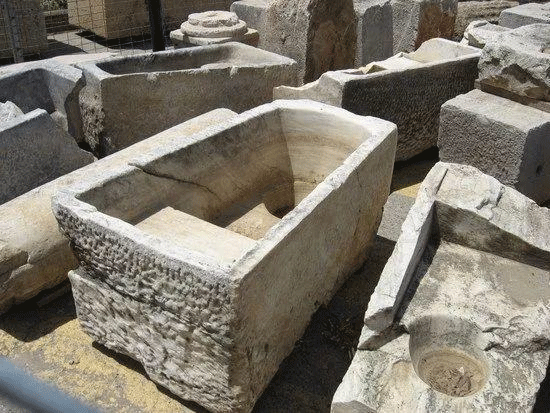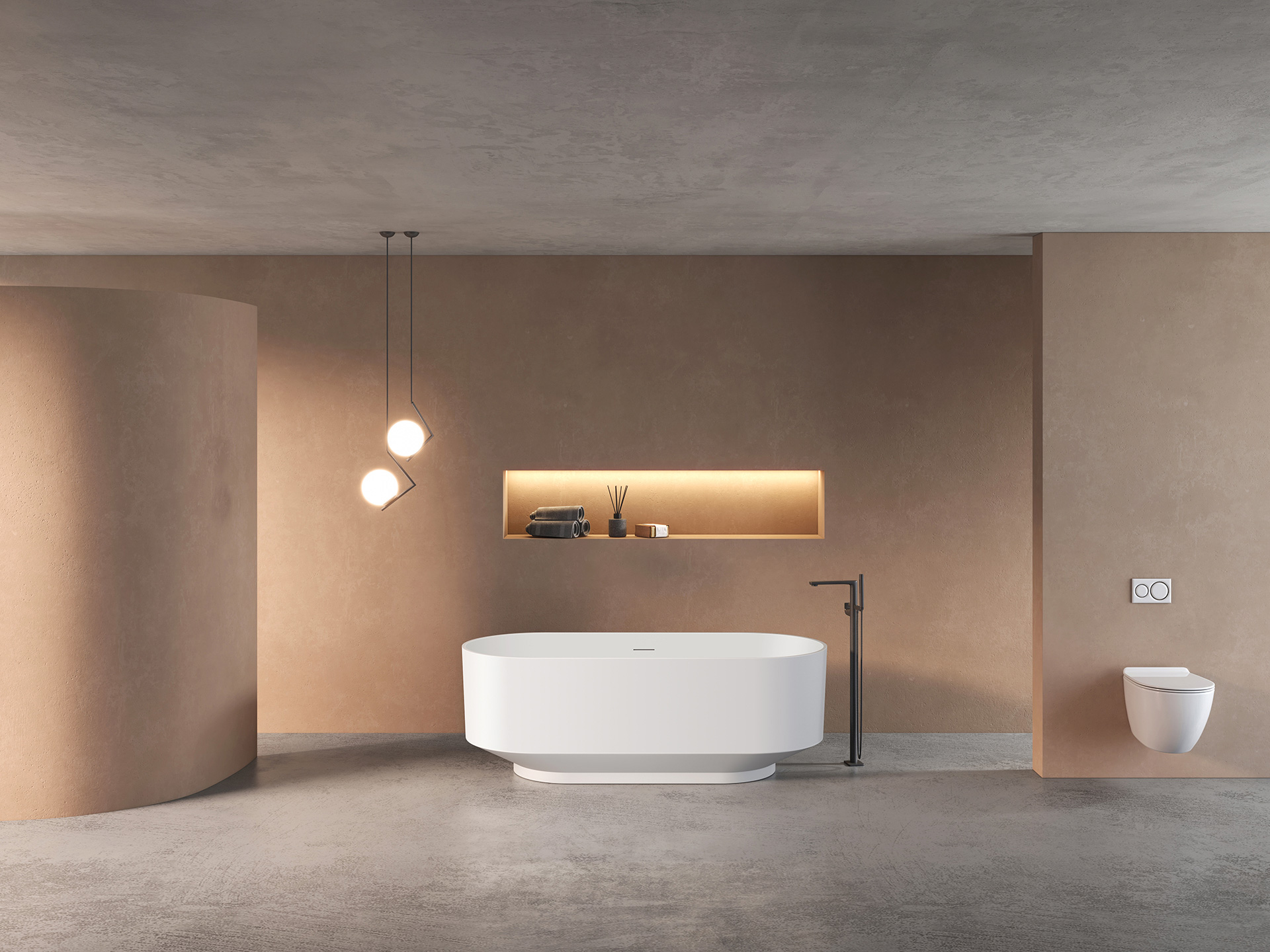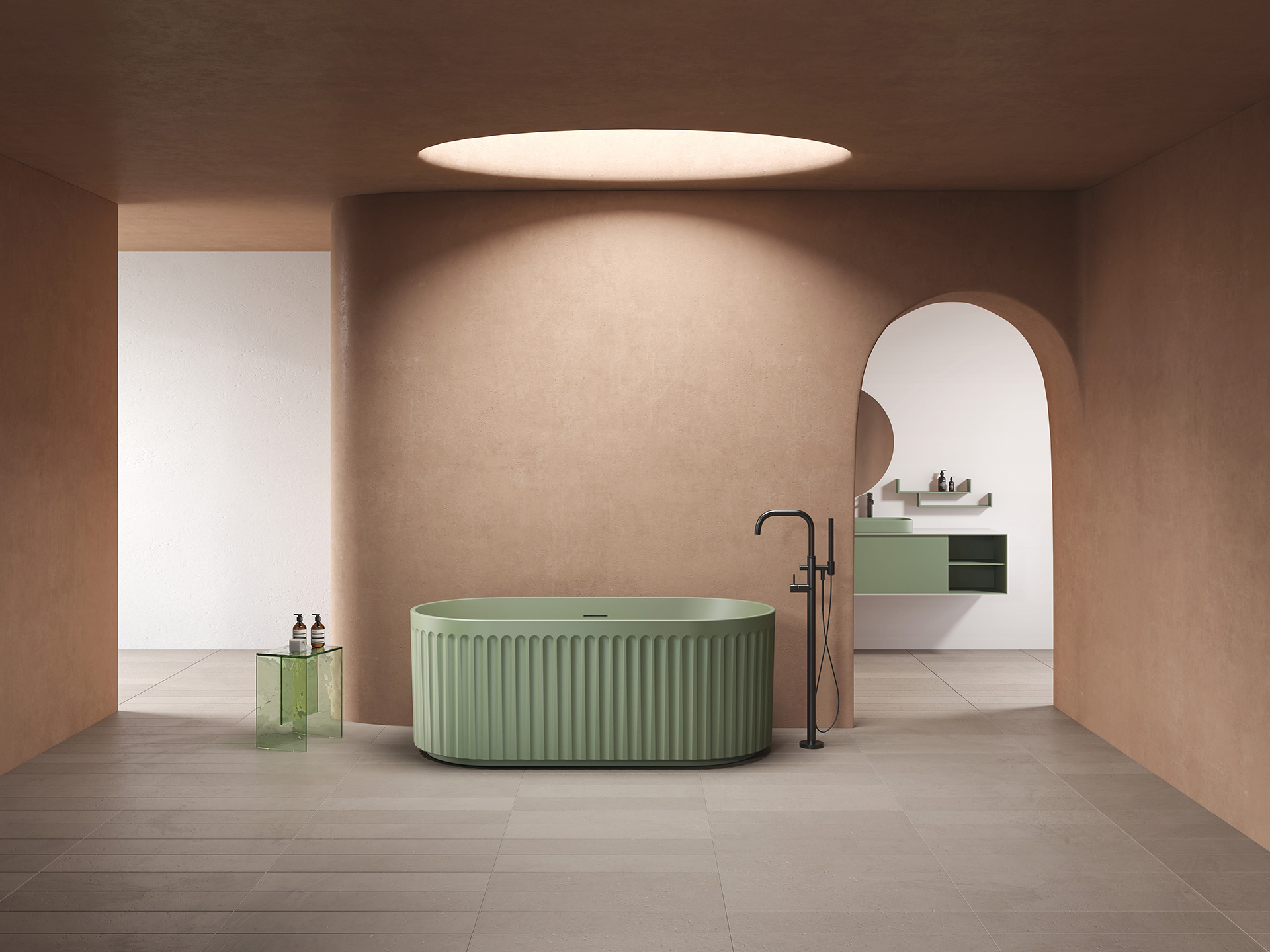Before the popularity of stand alone claw foot bathtub , people enjoyed soaking and invented bathtubs very early. Soaking is not a patent of modern people. As early as 3000 years ago, people invented bathtubs and began to enjoy soaking. On the issue of “how to take a bath and how to take a comfortable bath”, humans have been constantly exploring and advancing, occasionally regressing. Bathing has been a habit that has existed since the emergence of humans. But in the early days, there was no concept of a “bathroom”, let alone a bathtub. Natural streams and small rivers became public bathing areas for people. Even with the emergence of bathtubs later on, this public bathing area is still deeply loved by people. The birth of the first truly meaningful bathtub can be traced back to the ancient Greek island of Crete in 1700 BC. The northern city of Knossos has achieved a relatively modern level of hygiene and comfort. With excellent heating and drainage facilities, it is the first city in history to introduce bathtubs into daily life. The “ancestor” of the bathtub, a five foot (approximately 1.52 meters) long bathtub made of hard clay, was unearthed in the Temple of Knossos.
During the reign of the Roman Empire, bathing became a very fashionable thing, and collective bathing was no longer in small rivers, but with specialized public baths. At this time, the bathtub was more like a soaking pool, with a large area. It goes without saying that a public bathhouse, even a private bathroom, was as big as a room. The bathroom is decorated with great splendor, while the bathtub is made of marble as a material. Taking a bath has become a daily routine for people, and if they don’t take a bath for a while every day, they always feel uncomfortable all over. In the 19th century, with the development of pipeline systems, tap water entered daily life, and bathtubs had fixed positions for receiving and discharging water. The portability of bathtubs became increasingly poor, and eventually they were completely fixed in the bathroom. This is commonly used for wooden enclosed bathtubs – metal bathtubs are wrapped in wooden shells, so people no longer need to move the bathtub around or drain water from one basin to another. But while it is convenient, there are also many problems, the biggest of which is corrosion and cleaning. Metal wrapped in a wooden shell is prone to rusting, and the joints between metal and wood are also difficult to maintain cleanliness. Therefore, people began to study the material of bathtubs. Metal bathtubs not only have the disadvantage of being prone to corrosion and rust, but they are also prone to expansion and deformation when connected to hot water. When the hot water was ready to go in and take a comfortable bath, I found that the outer shell of the bathtub had cracked, which was a bit annoying.
In the 1850s, British bathtub manufacturers finally solved this problem and created bathtubs entirely made of ceramics. The solid ceramic bathtub has a smooth surface without seams, and the edges are smooth and beautiful. Not only does it not rust, but it is also easy to clean. It is worth owning, and the solid ceramic bathtub has become a symbol of social status, after all, such an expensive price that ordinary people cannot afford. Since it is a symbol of the life of the wealthy, it is better to simply do it better.
So in addition to meeting daily cleaning needs, the bathroom has added more functions, such as spa and so on. I really can do SPA at home without going out. With its powerful functions, its appearance needs to keep up. So people installed four metal feet at the bottom of the bathtub to make it look more beautiful, and exquisite patterns were carved on the feet – a stand alone claw foot bathtub was born from this. The standard claw foot bathtub reached its peak in the late 19th century, originating in the mid-19th century. At that time, the ball claw design originated in the Netherlands and spread to the UK, becoming popular among the nobility, just like bathing became increasingly fashionable. The early bathtubs in England were often made of cast iron, even tin and copper, with surfaces coated with paint that easily peeled off over time. The design of the standard claw foot bathtub is magnificent and complex, with a long and sloping backrest and exquisitely carved metal feet making it even more luxurious, and it is also known as the “Cadillac in the bathtub”. Of course, only the wealthy can afford it. However, not long after, the first war broke out, and the smoke of the war left people with no time to consider the splendor of stand alone claw foot bathtubs. The metal legs were also removed to make weapons, and people had to develop new types of bathtubs. With the passage of time, people have also invented various styles of bathtubs, and the standard claw foot bathtub is still a type of bathtub that people would think of when choosing, which shows that this bathtub is not outdated. The luxurious standard alone claw foot bathtub can give our bathroom a more beautiful overall appearance. In order to be beautiful, we cannot forget how to choose a high-quality and beautiful stand alone claw foot bathtub. We can start with the material, size, and color of the bathtub. Different bathtub materials not only have different appearances, but also have differences in insulation and durability. Currently, most homeowners use acrylic and ceramic bathtubs. Acrylic bathtubs are lightweight and easy to install, but due to poor thermal conductivity, they are relatively insulated and available in various sizes, colors, and shapes. Ceramic bathtubs are more delicate, thick, and stain resistant, but they are heavier and more expensive. In terms of size, we can determine the size of the standard claw foot bathtub based on the size of the bathroom, and also determine the size of the bathtub based on our own height and body shape. And we can also determine the suitable bathtub color based on the color of the bathroom decoration.

The installation of a stand alone claw foot bathtub mainly involves installing the legs of the bathtub. When installing the legs of the bathtub, soft objects such as blankets or cardboard boxes are placed on the ground on the side of the bathtub to protect the touchdown edges and flip the bathtub sideways. Install the upper two feet on the side first, and then place something under the middle, not too hard or sharp, to prevent scratching the bathtub. The installation holes for the bottom two feet are suspended, making it easy to install the bottom two feet (pay attention to holding the bathtub to prevent it from overturning). Some styles have letters corresponding to the back of the bathtub legs at the installation location, so tighten the screws. Some styles remove letters based on the principle of using a higher foot on the side where the person is lying and a lower foot on the side of the drainage hole, with two high and two low (to prevent water accumulation). The drainage hole is located in the middle of the style, and the four legs are the same. Just try changing the position and choose the combination with the best fit to install. The above is the installation method of the stand alone claw foot bathtub.
Installing an standard claw foot bathtub at home is indeed a blessing for bath enthusiasts. Proper bathing is indeed beneficial for people to relax and care for their skin, and the bathroom outside is not always very reassuring. Therefore, if you really enjoy taking a bath, you can consider installing a bathtub in your own bathroom. For friends who are in poor physical condition, such as those with heavy moisture and frequent discomfort in their legs and back, if they often insist on soaking in hot water for half an hour every day, it is believed that it will have a good effect on the body. The stand alone claw foot bathtub has beautiful lines and elegant appearance, no wonder its popularity has persisted, especially since it usually does not require additional fixation and can be brought to a new home along with other general furniture! Of course, there are other benefits such as:
1. Comfort
A stand alone claw foot bathtub is undoubtedly an item that can bring happiness to life. After a busy day at home, I feel exhausted both physically and mentally. However, if there is a bathtub at home, I can fill it with hot water and lie down, close my eyes, and enjoy a moment of peace and relaxation. Moreover, taking a bath can promote blood circulation throughout the body, making the body feel hot and warm. It can not only effectively loosen muscles and bones, alleviate shoulder, neck, and back pain, but also improve sleep quality.
2. Convenience
Secondly, the stand alone claw foot bathtub is also very convenient for families with children to use, after all, children always do not cooperate well in bathing, and they are also worried about catching a cold over time. But with a bathtub, the experience would be completely different,
Placing a few cute toys in the fish tank can attract children’s attention and enhance the fun of bathing. And the water temperature in the bathtub will not significantly decrease in a short period of time, so there is no need to worry about getting cold or catching a cold.
After experiencing the benefits of an standard claw foot bathtub, we also need to know how to maintain it and take corresponding measures when the bathtub encounters problems:
1、 Bathtub should be cleaned frequently and preferably every week
When cleaning the standard claw foot bathtub, use a sponge or lint cloth, do not use coarse cloth or cleaning cloth, do not use any cleaning agent containing granular objects, and can be cleaned with a warm and gentle cleaning agent. Cast iron bathtubs should be thoroughly washed with clean water and wiped dry with a soft cloth after each use. If stubborn stains are encountered, a small amount of abrasive cleaning agent can be used for cleaning. Clean the bottom anti slip surface with a soft nylon brush. Do not use wire balls, wire brushes, or grinding sponges for cleaning.
2、 Warm and handle surface stains, scale, and mold on the stand alone claw foot bathtub
You can use an abandoned soft bristled toothbrush dipped in bleach to scrub the surface, which not only removes stains but also removes mold. When encountering difficult to wipe stains, you can also use half a lemon dipped in salt to wipe, or use a soft bristled toothbrush to apply toothpaste with whitening function to scrub. For scale, products used to clean toilets on weekdays are very effective. For fungi and bacteria that cause fungal diseases, rinse with bleach and peroxide water and immediately wipe dry.
3、 Do not move without permission and repair bathtub wounds in a timely manner
Do not move the bathtub without permission after installation. If it needs to be moved, it is necessary to contact professional personnel. Do not use hard objects to strike or impact the surface, causing scratches or scratches. If you need to repair dull or scratched parts, you can use a clean cloth mixed with a colorless automatic polishing solution to vigorously wipe, and then apply a layer of colorless maintenance wax.
4、 Handle congestion in bathtub pipes at any time and disinfect them on time
The pipeline needs to be cleaned once or twice a week to eliminate odors and prevent bacterial growth. You can use a product specifically designed to clean the sewer, pour it into the sewer, and clean it after five minutes.


